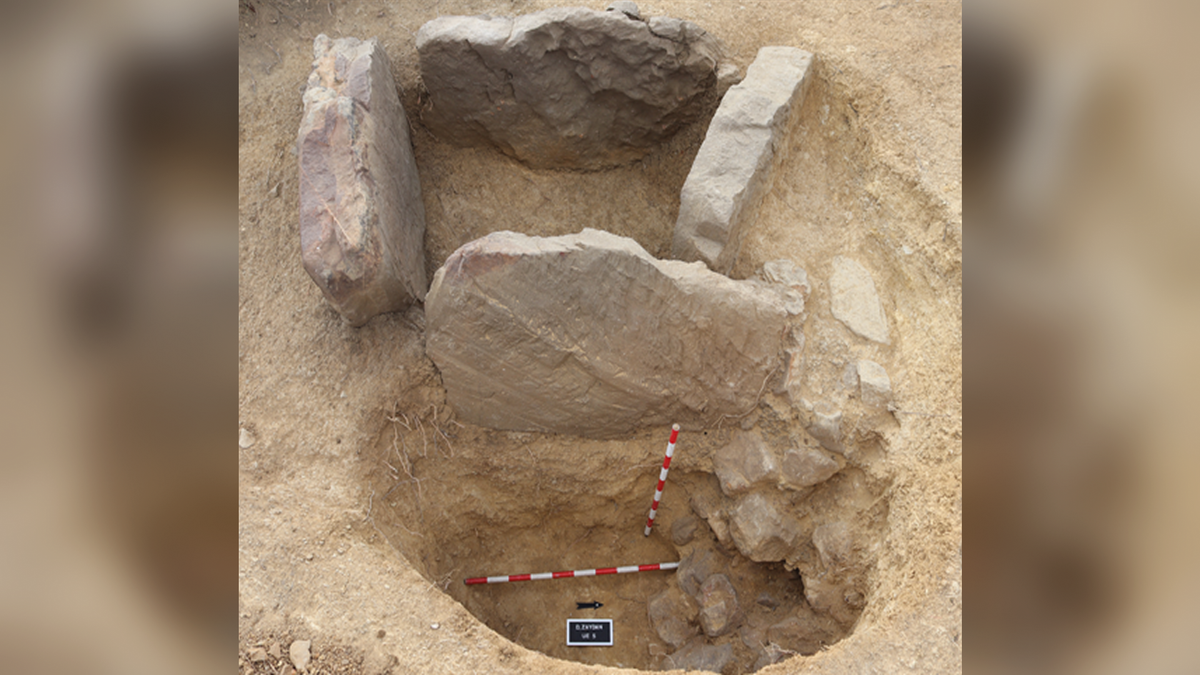Now Reading: 4,000-Year-Old Ancient Burial Site Unearthed in Tangier
-
01
4,000-Year-Old Ancient Burial Site Unearthed in Tangier
4,000-Year-Old Ancient Burial Site Unearthed in Tangier

Swift Summary
- Discovery Location: Tangier Peninsula, morocco, south of the Strait of Gibraltar.
- Findings: Archaeologists discovered three ancient cemeteries, including stone-lined burials (cist burials) dating back 4,000 years. Rock shelters with art and standing stones were also identified.
- Cist Burial Details: radiocarbon dating of human bones steadfast construction to be around 2000 B.C., marking the first confirmed date for such burials in northwest Africa.
- Rock Art: Around a dozen shelters featured geometric designs-squares,dots,wavy lines-and anthropomorphic figures. Notable were “bi-triangular” drawings resembling feminine representations and squares with internal dots and lines similar to Saharan rock art.
- Standing Stones: Several vertical stones found at sites varied in size (up to 8.2 feet tall), potentially serving as territorial markers or places for rituals.Clusters of stones indicate aggregation areas during prehistoric times.
- Parallels Noted: The burial traditions,rock art styles,and standing stones show similarities with those from southern Iberia and the Sahara.
Indian Opinion Analysis
The recent discoveries in Tangier provide valuable insights into complex ritual landscapes outside Egypt in North Africa-an area less studied compared to surrounding regions. For India’s archaeological community or global researchers focusing on ancient civilizations like Harappa or Sangam-era Tamil Nadu cultures, these findings underscore the importance of documenting burial customs alongside artistic expressions within prehistoric societies.
Rock art’s thematic parallels across continents highlight humanity’s shared creative impulses over millennia-a factor that could inspire cross-cultural investigations linking similar motifs between India’s paleolithic Bhimbetka caves and Morocco’s Tangier peninsula. Additionally, tangible evidence like radiocarbon-dated burials demonstrates how advanced scientific tools elevate understanding-but also stress conservation needs for such artifacts globally.
Closer ties between Indian researchers and African counterparts can help unearth comparative studies linking trade routes via prehistoric saharan migrations or even early maritime connections through peninsulas like Tangier-a potential ancient juncture connecting continents long before colonialism-defined borders emerged.
!Stone-lined tomb
Caption: One of the newly discovered stone-lined tombs known as a burial cist.
(Image credit: Photo by Hamza Benattia)
!Standing Stones
Caption: One of the standing stones that might have marked territory.
(Image credit: Photo by Hamza Benattia)
!Rock Art Scene
Caption: A “bi-triangular” rock art scene digitally enhanced for better visibility.
(Image credit: Courtesy of Hamza Benattia)




























